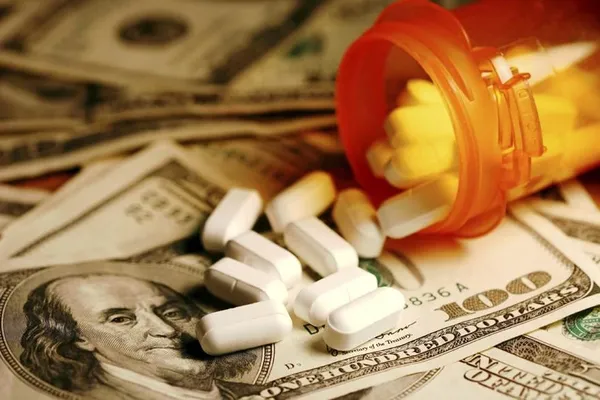at 612-315-3037 or
www.swansonhatch.com

According to the U.S. Department of Health and Human Services (DHHS), prescription drug prices rose from $367 billion in 2012 to $457 billion in 2015, and 30% of the increase was linked to price hikes. This represented approximately 17% of the $2.7 trillion spent on health care in the United States. As Attorney General, Lori Swanson took a multi-tiered approach to the high cost of prescription drugs.
First, she strongly advocated that Congress should enable the Centers for Medicare and Medicaid Services (CMS), the largest direct and indirect purchaser of prescription drugs, to negotiate with pharmaceutical companies over the cost of drugs. Swanson argued that Congress was derelict in prohibiting CMS to negotiate favorable prices. She was highly critical that Congressional leaders of both political parties repeatedly caved in to “Big Pharma,” whose members perhaps wield the most political clout in Washington.
Second, recognizing the failure of the federal government to address the issue, Swanson was an advocate for legislation at the state level that would follow the prescription drug plan utilized in the states of Washington and Oregon. All states purchase drugs for their hospitals, prisons, veterans nursing homes, state employees, and the like. Having leverage inherent in being a large consumer of drugs, the states generally negotiate a lower price with the pharmaceutical industry than other smaller purchasers. Oregon and Washington enacted legislation which created the Northwest Drug Purchasing Consortium. The Consortium negotiates a drug formulary, the benefit of which any citizen of their state can use. The Consortium claims that on average it achieves a 40% discount on the cost of prescription drugs.
In addition to proposing such legislation, Swanson participated in many multi-state antitrust lawsuits against pharmaceutical manufacturers, resulting in a recovery of over $100 million for the public in Minnesota. Different than other states, Swanson undertook efforts to get the recoveries distributed to the people who purchased the medication.
The Federal Trade Commission (“FTC”) and state attorneys general combined to undertake various antitrust legal actions against the pharmaceutical industry, generally in the following categories:
Generic drugs have historically been extremely important in containing the prices of branded drugs. In 2015, generic drugs composed 88% of the prescriptions written in the United States. In marketing their products, generic drug manufacturers attend many multi-day conferences to exchange views with other participants in the drug distribution chain.
These meetings allow various competitors in the pharmaceutical distribution chain to discuss their respective businesses and customers. These conventions include recreational and educational activities which allow industry representatives to network with one another. There is nothing wrong with competitors attending inter-industry conventions.
Of course, they shouldn’t be exchanging pricing strategies of competing products. As it turns out, representatives of generic drug manufacturers didn’t just attend conventions. They periodically gathered in Minnesota and elsewhere to hold “Girls Night Out” parties. Trying to avoid written documentation of collusion, the representatives would negotiate which company’s drugs would be sold to which wholesaler, distributor or retailer. In some cases, the sales representative of a manufacturer would agree to “walk away” from a customer. On other occasions, they would agree to share a customer, but then raise their prices simultaneously.
One of the drugs involved in the marketing effort was Doxy DR, of which a critical component is doxycycline, manufactured by Heritage. The price rose over a two-year period by 8,000%, from $20 to 500 tablets to $1,849. Another drug was Glyburide, an oral medication that treats type 2 diabetes.
This case, a multi-state matter involving 40 states, was still pending in U.S. District Court in the state of Connecticut at the close of Swanson’s tenure as Attorney General. There are several other antitrust cases that have been resolved or are still pending, but none with such Minnesota notoriety as the “Girls Night Out.”
References: